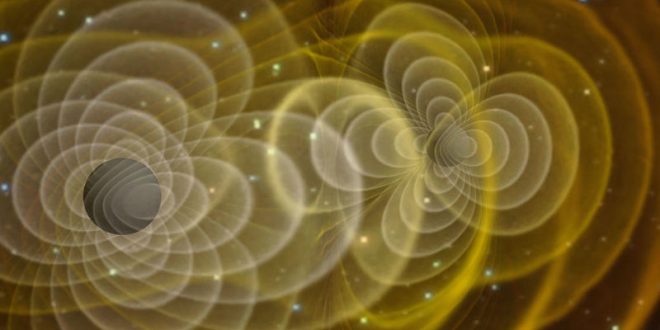Black holes outside our galaxy may be fundamentally different from those found in the Milky Way, scientists have found.
In our galaxy, scientists have been able to detect black holes from their electromagnetic emissions. Outside our galaxy, gravitational waves carry information about black holes that can tell us about their nature and origins.
The paper, published in Nature, is based on data that came about following landmark observations of gravitational waves by the LIGO gravitational wave detector in 2015 and again in 2017.
In our own galaxy we have been able to electromagnetically observe black holes orbited by stars and map their behaviour – notably their rapid spinning.
Gravitational waves carry information about the dramatic origins of black that cannot otherwise be obtained. Physicists concluded that the first detected gravitational waves, in September 2015, were produced during the final fraction of a second of the merger of two black holes to produce a single, more massive spinning black hole. Collisions of two black holes had been predicted, but never observed.
As such, gravitational waves present the best and only way to get a deep look at the population of stellar-mass binary black holes beyond our galaxy. This paper states that the black holes seen via gravitational waves are different to those previously seen in our galaxy in one of two possible ways.
The first possibility is that the black holes are spinning slowly. If that is the case it suggests that something different is happening to the stars that form these black holes than those observed in our galaxy.
The second possibility is that the black holes are spinning rapidly, much like those in our galaxy, but have been ‘tumbled’ during formation and are therefore no longer aligned with orbit. If this is the case, it would mean that the black holes are living in a dense environment – most likely within star clusters. That would make for a considerably more dynamic formation.
There is, however, also the chance that both possibilities are true – that there are instances of black holes spinning slowly in the field and instances of black holes spinning rapidly in a dense environment.
Dr Will Farr, from the School of Physics and Astronomy at the University of Birmingham, explained, “By presenting these two explanations for the observed behaviour, and ruling out other scenarios, we are providing those who study and try to explain the formation of black holes a target to hit. In our field, knowing the question to ask is almost as important as getting the answer itself.”
Professor Ilya Mandel, also from the University of Birmingham, added “We will know which explanation is right within the next few years. This is something that has only been made possible by the recent LIGO detections of gravitational waves. This field is in its infancy; I’m confident that in the near future we will look back on these first few detections and rudimentary models with nostalgia and a much better understanding of how these exotic binary systems form.”
Agencies/Canadajournal
 Canada Journal – News of the World Articles and videos to bring you the biggest Canadian news stories from across the country every day
Canada Journal – News of the World Articles and videos to bring you the biggest Canadian news stories from across the country every day



